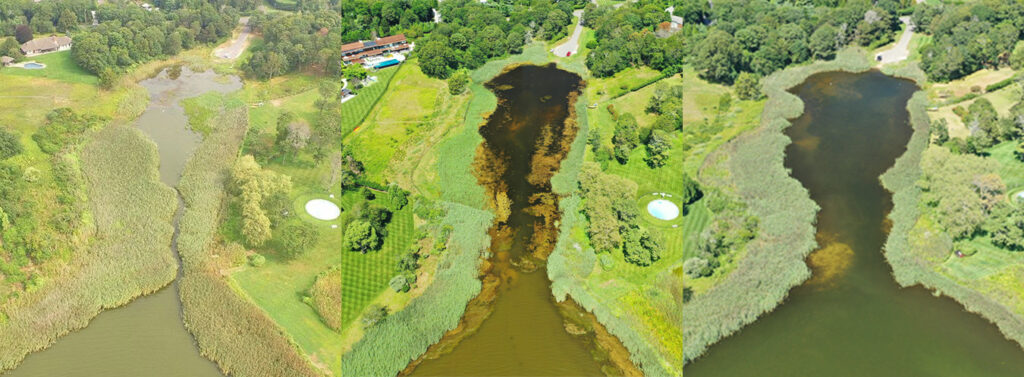Dredging sediment from the ocean floor and nearshore waters is commonly done to maintain navigational channels. Environmental dredging to remove muddy sediment build-up and legacy contaminants—which are often contained in mud—is less common. In a study of Georgica Pond’s sediments, the Gobler Lab found that the pond’s sediments are not only a significant source of phosphorus, but they also harbor a lot of nitrogen. Dredging is particularly challenging at Georgica Pond where there is little or no nearshore land to store the dredged sediment while it de-waters.
History
In 2018, Friends of Georgica Pond Foundation in conjunction with the East Hampton Town Trustees and the Village of East Hampton began an experimental dredging project at the eastern bottleneck at Georgica Cove. Over the years, Phragmites, the invasive common reed grass, had almost completely blocked off the Cove, preventing tidal flow and public access to the pond.
The project was designed, permits obtained, and the work was completed in 2020. The thick growth of Phragmites was first cut and then the sediment and root mass were dredged and stored in a Geotube to de-water before being hauled away. Following the project, the shoreline was restored. Although there were technical challenges and less material was dredged than planned, the channel was opened and better flushing and access was obtained.

Monitoring
Since the project completion, FOGP has been monitoring the bottleneck with the use of drone photography to track the changes on the shoreline and within the Cove to better anticipate if more remediation will be needed.
As of this growing season, the channel has remained open and the water flowing. Drone photographs from 2015 (pre-dredging), 2021 and 2023 clearly show the benefits of the project.
FOGP would like to thank the East Hampton Town Trustees, the Village of East Hampton, and Hally Dinkle for his drone photography.
